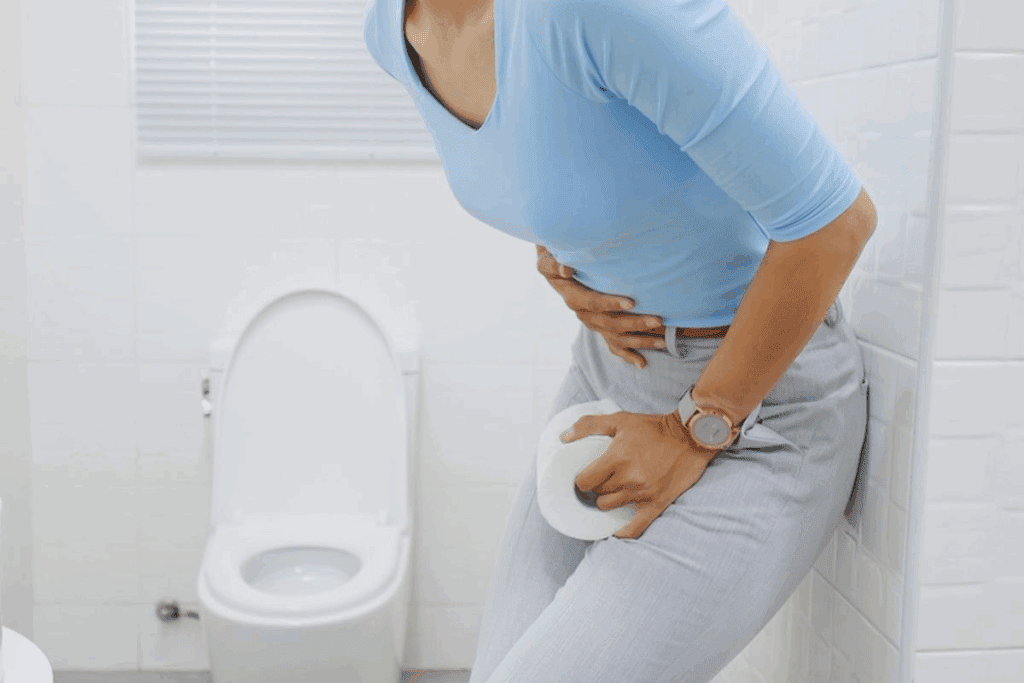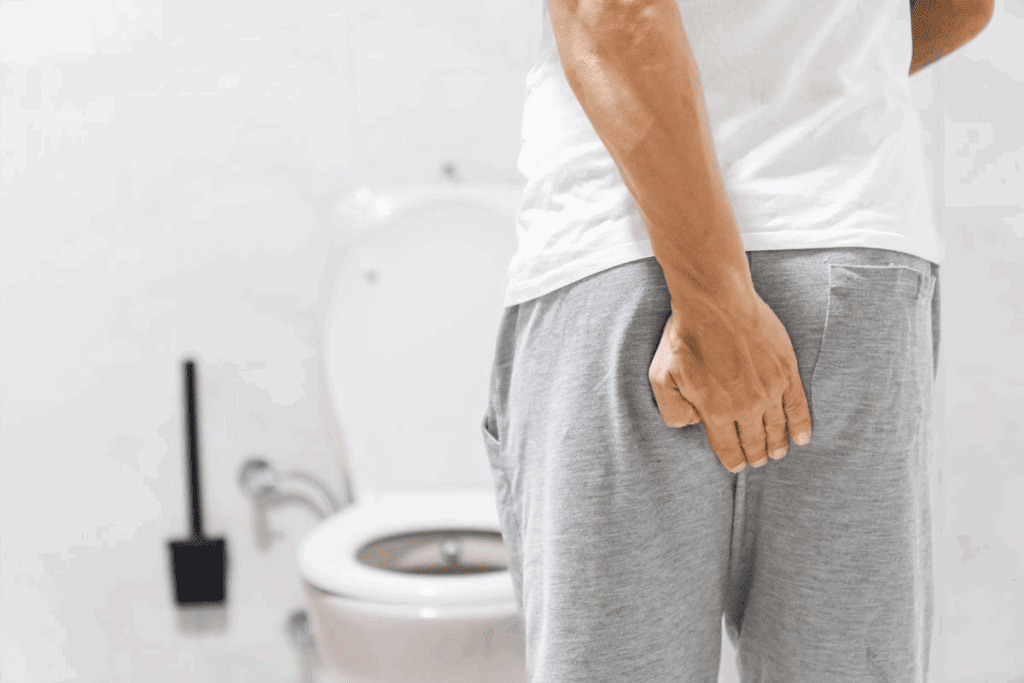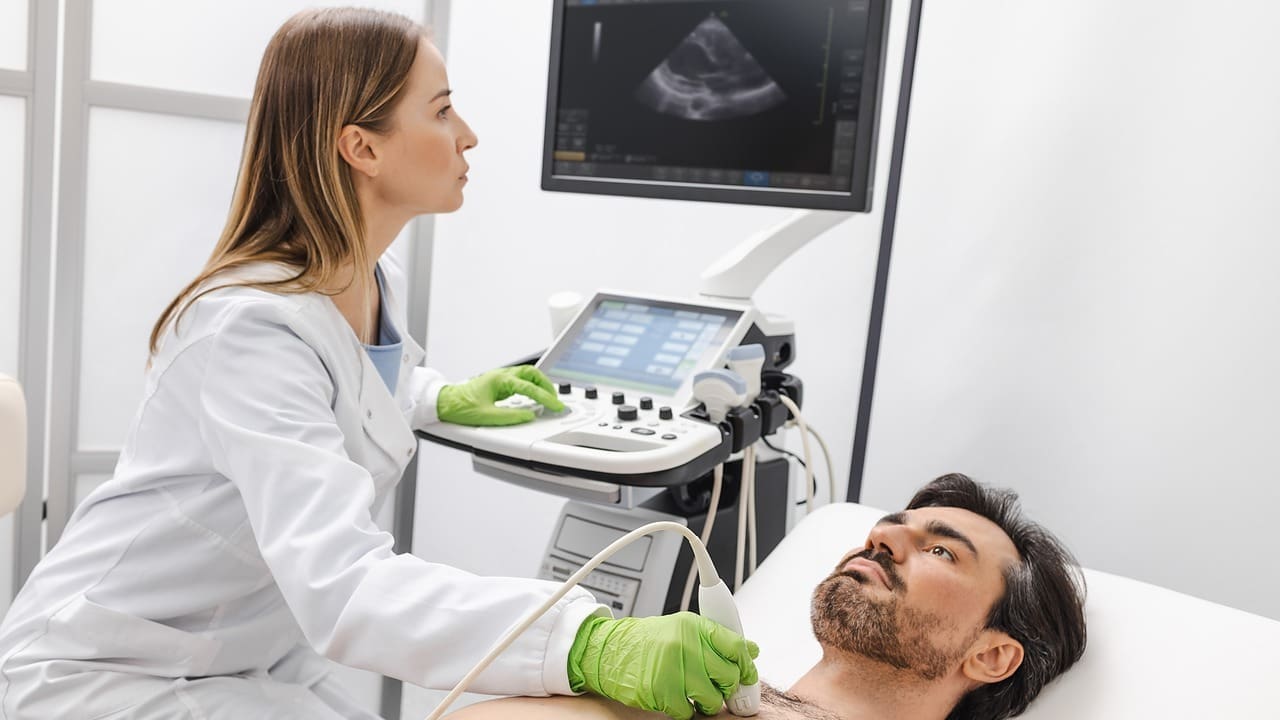Last Updated on November 26, 2025 by Bilal Hasdemir

The gallbladder is key in digestion, storing bile to break down fats. When it’s diseased, it can’t release bile well. This can cause digestive problems.
Impaired bile release means fats aren’t digested or absorbed right. This can lead to changes in bowel movements. Diarrhea is a common symptom for those with gallbladder disease.
Liv Hospital’s team can help you understand how gallbladder disease affects bowel symptoms. They offer a patient-focused approach to these issues.
Key Takeaways
- Gallbladder disease can lead to impaired bile release, affecting fat digestion.
- Poor fat digestion can cause changes in bowel movements, including diarrhea.
- Liv Hospital offers expertise in understanding the link between gallbladder disease and bowel symptoms.
- A patient-focused approach is key in addressing gallbladder disease and its symptoms.
- Understanding the role of the gallbladder in digestion is key to managing its disease.
The Gallbladder’s Role in Digestion

It’s key to know how the gallbladder works to understand its impact on digestion. This small organ is vital in the digestive process.
Anatomy and Function
The gallbladder sits under the liver and links to the liver and small intestine. It mainly stores and concentrates bile. Bile is a liver-made fluid that helps digest fats.
Bile Production and Storage
The liver makes bile, which then goes to the gallbladder. When food hits the small intestine, the gallbladder sends bile to help digest fats.
Normal Digestive Process
In a healthy digestion, the gallbladder sends bile to the small intestine. This bile breaks down fats for enzymes to absorb. It’s key for getting fat-soluble vitamins.
| Organ | Function in Digestion |
| Liver | Produces bile to aid in fat digestion |
| Gallbladder | Stores and releases bile into the small intestine |
| Small Intestine | Receives bile and enzymes to digest nutrients |
The gallbladder’s role in digestion shows its big part in a healthy digestive system. Knowing its function helps us see how gallbladder disease affects health.
Understanding Gallbladder Disease

Gallbladder disease covers several conditions, like gallstones and cholecystitis. These can really affect your life, causing pain and discomfort.
Common Types of Gallbladder Conditions
The main types of gallbladder issues are:
- Gallstones: Small, hard deposits in the gallbladder, causing pain and possibly blocking bile ducts.
- Cholecystitis: Inflammation of the gallbladder, which can be acute or chronic and is often linked to gallstones.
- Biliary dyskinesia: A condition where the gallbladder doesn’t work right, leading to poor bile release and digestive problems.
These issues can lead to serious complications if not treated, like chronic inflammation and infection.
Prevalence and Risk Factors
Gallbladder disease is quite common, affecting millions globally. Gallstones, for instance, become more common with age and are more prevalent in women. Risk factors include:
- Diet: Eating a lot of fat and little fiber can raise the risk of gallstones.
- Genetics: Family history greatly influences the risk of gallbladder disease.
- Obesity: Being overweight or obese increases the risk of gallstones.
- Age: The risk of gallbladder disease grows with age, more so after 40.
Early Warning Signs
It’s important to recognize the early signs of gallbladder disease. Symptoms include:
- Abdominal pain, mainly in the upper right.
- Nausea and vomiting, often after eating fatty foods.
- Digestive issues, like diarrhea or bloating.
- Jaundice, a yellowing of the skin and eyes due to bile duct blockage.
Knowing these symptoms can help you get medical help early. This can prevent serious problems and improve your health.
Gallbladder and Diarrhea: The Direct Connection
It’s important to know how the gallbladder and diarrhea are linked. The gallbladder helps with digestion by storing and releasing bile. This bile goes into the intestines.
How Bile Affects Bowel Movements
Bile is made by the liver and stored in the gallbladder. It helps digest fats and absorb vitamins. Bile salts break down fats into smaller pieces for enzymes to process.
When bile reaches the intestines, it can change bowel movements. Here’s how:
- Bile helps move food through the digestive system.
- Too much bile can cause diarrhea by speeding up bowel movements.
- Bile acids can also affect the colon’s movement, changing bowel habits.
Mechanisms Behind Diarrhea in Gallbladder Disease
Gallbladder disease can mess up bile release, leading to chronic diarrhea. This happens because of:
- Problems with the gallbladder’s contraction and bile release.
- More bile acid production, which can irritate the intestines.
- Changes in how the intestines move due to bile acid circulation.
Research on Chronic Symptoms (4-10 Loose Bowel Movements Daily)
Studies show gallbladder disease often causes chronic diarrhea. Some people have 4-10 loose bowel movements a day. This is because bile keeps flowing into the intestines, even without food.
Key findings include:
| Symptom | Frequency | Impact on Quality of Life |
| Diarrhea | 4-10 times daily | Significant impact, affecting daily activities |
| Abdominal pain | Intermittent | Moderate to severe impact |
| Fat malabsorption | Common | Nutritional deficiencies |
Knowing these details helps in finding better ways to manage symptoms for those with gallbladder disease and chronic diarrhea.
How Impaired Bile Release Affects Fat Digestion
Bile is key for fat digestion, and problems with its release can cause malabsorption. The liver makes bile, which the gallbladder stores. It helps break down fats for enzymes to digest. Without enough bile, fat digestion is hard.
Fat Malabsorption Process
Fat malabsorption happens when the body can’t digest fats well because of bile issues. This means fats aren’t broken down and are passed in the stool. Symptoms include fatty or greasy stools, showing malabsorption.
Mechanisms Behind Fat Malabsorption:
- Inadequate bile release due to gallbladder disease or removal
- Reduced emulsification of fats, making them harder for enzymes to digest
- Increased likelihood of fatty stools and malabsorption symptoms
Changes in Intestinal Transit Time
Impaired bile release also changes how food moves through the intestines. Without proper emulsification, fats can slow or speed up digestion. This can cause diarrhea or constipation.
The Impact on Bowel Movements:
| Condition | Effect on Bowel Movement |
| Impaired Bile Release | Potential for diarrhea due to unabsorbed fats |
| Normal Bile Release | Regular bowel movements with proper fat absorption |
Impact on Nutrient Absorption
Impaired bile release also affects nutrient absorption. Without proper fat digestion, fat-soluble vitamins (A, D, E, and K) are harder to absorb. This can lead to deficiencies if not treated.
Nutrient Absorption Concerns:
- Fat-soluble vitamin deficiencies
- Potential for other nutrient malabsorption due to altered gut environment
- Increased risk of nutritional deficiencies if left untreated
Recognizing Gallbladder Symptoms in Poop
Gallbladder disease can show up in different ways in your stool. This is a key sign to watch for. The gallbladder helps with digestion, and problems with it can change how you go to the bathroom.
Pale or Clay-Colored Stools
One big sign of gallbladder disease is pale or clay-colored stools. This happens when gallstones block the bile ducts. Bile salts make stool brown, and less bile means stools look different.
A notable quote from a medical professional states,
“The color of the stool can be an important indicator of the presence of gallbladder disease, as it reflects the level of bile salts in the intestine.”
Fatty or Greasy Stool Appearance
Gallbladder problems can also make your stool look fatty or greasy. This is because bile isn’t released right. Bile helps break down fats, and without it, fats aren’t digested well.
Stools that float or feel greasy can mean you’re not absorbing fats right. This is often linked to gallbladder disease.
Changes in Stool Consistency and Frequency
Stool consistency and frequency can also change with gallbladder issues. Diarrhea is a common symptom. It’s caused by how bile acids affect the intestines.
If you notice these changes, see a doctor. They can find out why it’s happening.
Gallstones and Their Effect on Bowel Movements
Gallstones can really mess with your digestive system, causing changes in how you go to the bathroom. This happens because gallstones block the bile duct. This blockage stops bile from flowing into the intestine, which is key for digesting fats and absorbing certain vitamins.
Formation and Blockages
Gallstones form in the gallbladder and can be different sizes. When they move into the bile duct and block it, they cause symptoms. The blockage stops bile from getting into the intestine, which is important for digesting fats and absorbing fat-soluble vitamins.
Gallstones form when bile hardens into stone-like structures. This can happen if there’s too much cholesterol or bilirubin in the bile. When gallstones block the bile duct, it can cause severe pain, known as biliary colic, and other problems.
Bile Duct Obstruction Symptoms
When gallstones block the bile duct, several symptoms can show up. These include:
- Severe abdominal pain, often radiating to the back
- Jaundice, characterized by yellowing of the skin and eyes
- Dark urine and pale stools
- Nausea and vomiting
- Fever and chills if an infection is present
These symptoms mean you need to see a doctor right away. The blockage can lead to infection and other serious problems if not treated quickly.
Pain and Digestive Upset Connection
The pain from gallstones is often tied to digestion. Eating, and fatty meals in particular, can trigger biliary colic. This pain happens because the gallbladder contracts to release bile in response to food, but a gallstone can block this, causing pain.
Digestive upset, like bloating, gas, and changes in bowel movements, can also happen. Without enough bile in the intestine, fats aren’t absorbed well, leading to fatty stools and other digestive issues.
It’s important to understand how gallstones, bile duct blockages, and digestive symptoms are connected. Recognizing symptoms early can help prevent serious problems and improve treatment outcomes.
Post-Meal Diarrhea with Gallbladder Problems
Eating fatty meals can cause diarrhea in people with gallbladder disease. This happens because the gallbladder doesn’t release bile well. Bile is key for breaking down fats.
The Fatty Meal Trigger Effect
After eating a fatty meal, the body needs more bile to digest the fat. But, if you have gallbladder disease, your gallbladder might not release enough bile. This leads to fat malabsorption and diarrhea.
- Fatty foods trigger increased bile release.
- Impaired gallbladder function leads to inadequate bile release.
- Poor fat digestion results in diarrhea.
Timing and Urgency of Symptoms After Eating
The timing and urgency of diarrhea after eating can differ. Usually, symptoms start 30 minutes to a few hours after a meal, mainly if it’s fatty.
- Symptoms can start within 30 minutes.
- Peak urgency is often reached within 1-2 hours.
- Duration of diarrhea can last several hours.
Abdominal Cramping and Discomfort
People with gallbladder disease often feel abdominal cramping and discomfort after eating. These symptoms come from the body’s trouble digesting fats and the intestinal cramping that follows.
- Cramping is caused by intestinal muscle contractions.
- Discomfort can range from mild to severe.
- Symptoms can be worse with large or fatty meals.
It’s important to understand how gallbladder problems and post-meal diarrhea are linked. Knowing the triggers and symptoms helps manage them. This can improve your quality of life.
Diarrhea Following Gallbladder Removal
After having your gallbladder removed, you might notice changes in your bowel habits. Diarrhea is a common issue that can affect your digestive system. This is because the gallbladder plays a key role in digestion.
Post-Cholecystectomy Syndrome
Post-cholecystectomy syndrome, or PCS, is a condition some people face after gallbladder surgery. Diarrhea is a major symptom of PCS, impacting many patients.
Key symptoms of PCS include:
- Chronic diarrhea
- Abdominal pain
- Bloating and gas
- Fatty stools
Altered Bile Acid Regulation
The gallbladder helps control bile flow into the intestine. Without it, bile flows continuously, causing altered bile acid regulation. This can irritate the intestine, leading to diarrhea.
The process works like this:
- Bile acids stimulate the intestinal lining.
- They increase water and electrolyte secretion.
- They speed up intestinal movement.
Adaptation Period and Long-term Management
Diarrhea can start right after surgery or develop later. The body needs time to adjust, and some symptoms may go away on their own.
For long-term management, several strategies can be employed:
- Dietary modifications: Avoiding fatty foods and increasing fiber intake
- Bile acid sequestrants: Medications that can help bind bile acids and reduce diarrhea
- Probiotics: Beneficial bacteria that can aid in restoring gut health
Managing diarrhea after gallbladder removal needs a full plan. This includes medical treatments and lifestyle changes. It’s important to talk to a healthcare provider to find the right treatment.
Diarrhea and Gallbladder Pain: The Symptom Complex
Understanding the connection between diarrhea and gallbladder pain is key to managing gallbladder disease. These symptoms can give clues about what’s going on inside the body.
Understanding the Pain-Diarrhea Connection
The gallbladder plays a big role in digestion. When it’s not working right, it can cause abnormal bile release. This can mess with bowel movements and lead to pain.
Studies show that people with gallbladder disease often have diarrhea and stomach pain. The pain-diarrhea connection is complex. It involves inflammation, bile issues, and how fast the gut moves.
Location and Characteristics of Pain
Gallbladder pain usually happens in the upper right abdomen. It can also spread to the back or right shoulder. The pain might feel sharp, crampy, or just a dull ache. Knowing what gallbladder pain feels like is important for figuring out the cause.
When Symptoms Signal an Emergency
While diarrhea and gallbladder pain can be treated, some signs mean you need to see a doctor fast. Severe stomach pain, fever, jaundice, or vomiting blood are warning signs. You should get help right away.
| Symptom | Possible Indication | Action Required |
| Severe abdominal pain | Gallbladder rupture or severe inflammation | Immediate medical attention |
| Fever and jaundice | Infection or bile duct obstruction | Urgent medical evaluation |
| Vomiting blood | Internal bleeding or severe gastrointestinal distress | Emergency medical care |
Knowing the emergency symptoms of gallbladder disease is critical. It helps get the right help quickly and avoid serious problems.
Diagnosing and Treating Gallbladder-Related Diarrhea
Diagnosing and treating gallbladder-related diarrhea needs a mix of medical help and changes in diet. Getting the right diagnosis is key to managing symptoms well.
Diagnostic Tests and Procedures
Tests to find gallbladder-related diarrhea include imaging, blood tests, and sometimes more detailed procedures.
- Imaging Tests: Ultrasound is often used to see the gallbladder and find gallstones or other issues.
- Blood Tests: These tests can show signs of infection, inflammation, or liver problems.
- Specialized Procedures: Sometimes, ERCP is needed to look at the bile ducts.
Medical Interventions
After finding the cause, treatments for gallbladder-related diarrhea include several steps.
- Bile Acid Sequestrants: Medications like cholestyramine can help by binding to bile acids.
- Antibiotics: If there’s an infection, antibiotics are used.
- Pain Management: Medications help with pain from gallbladder disease.
Dietary Modifications and Bile Acid Sequestrants
Changing what you eat is very important in managing gallbladder-related diarrhea.
- Low-Fat Diet: Eating less fat can help lessen symptoms.
- Avoiding Trigger Foods: It’s important to know and avoid foods that make diarrhea worse.
- Bile Acid Sequestrants: These medicines can also help manage diarrhea.
By using these methods together, people with gallbladder-related diarrhea can see big improvements in their symptoms.
Conclusion
It’s important to understand how gallbladder disease and diarrhea are connected. The gallbladder helps with digestion. When it doesn’t work right, it can cause diarrhea and other stomach problems.
To manage symptoms, you need to tackle the root cause of diarrhea. Knowing the signs of gallbladder disease helps. This way, you can get the right treatment and feel better.
In short, the link between gallbladder disease and diarrhea is complex. By understanding this, you can find better ways to manage your symptoms. This leads to better digestion and overall health.
FAQ
What is the role of the gallbladder in digestion?
The gallbladder stores and releases bile. Bile is a digestive fluid made by the liver. It helps digest fats and absorb them.
How does gallbladder disease cause diarrhea?
Gallbladder disease can stop bile from being released properly. This leads to poor fat absorption and changes in bowel movements, like diarrhea.
What are the symptoms of gallbladder disease in stool?
Symptoms include pale or clay-colored stools and fatty or greasy stools. There can also be changes in how often you go and the consistency of your stool.
How do gallstones affect bowel movements?
Gallstones can block the flow, causing pain and digestive issues. They can also change bowel movements, leading to diarrhea.
What is post-cholecystectomy syndrome?
Post-cholecystectomy syndrome is when you have diarrhea and other symptoms after your gallbladder is removed. It’s often due to changes in how bile acids work.
How is gallbladder-related diarrhea diagnosed?
Doctors use tests and procedures like imaging and bile acid tests to find the cause of diarrhea.
What are the treatment options for gallbladder-related diarrhea?
Treatment includes medical help, changing your diet, and using bile acid sequestrants. These help manage symptoms and keep bowel movements regular.
Can fatty meals trigger diarrhea in individuals with gallbladder problems?
Yes, fatty meals can cause diarrhea in people with gallbladder issues. This is because the gallbladder can’t release enough bile to digest fats.
What is the connection between gallbladder pain and diarrhea?
Gallbladder pain and diarrhea often go together. The cause of pain can also affect bowel movements, leading to diarrhea.
How can I manage diarrhea caused by gallbladder disease?
To manage diarrhea, try a low-fat diet and use medical treatments like bile acid sequestrants. These help keep bowel movements regular.
What are the changes in intestinal transit time in gallbladder disease?
Gallbladder disease can change how fast or slow food moves through your digestive system. This affects bowel movements.
How does impaired bile release affect nutrient absorption?
Not having enough bile release can cause poor fat and fat-soluble vitamin absorption. This can lead to nutrient deficiencies.





